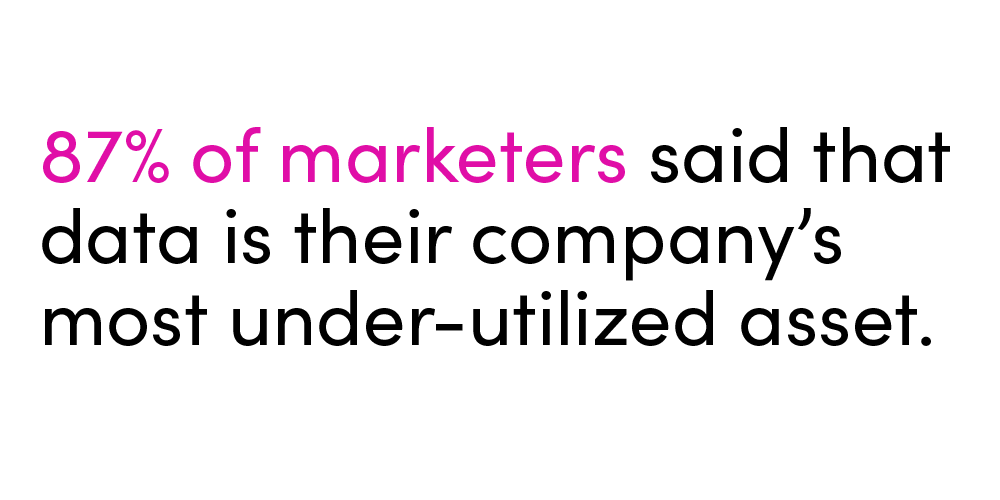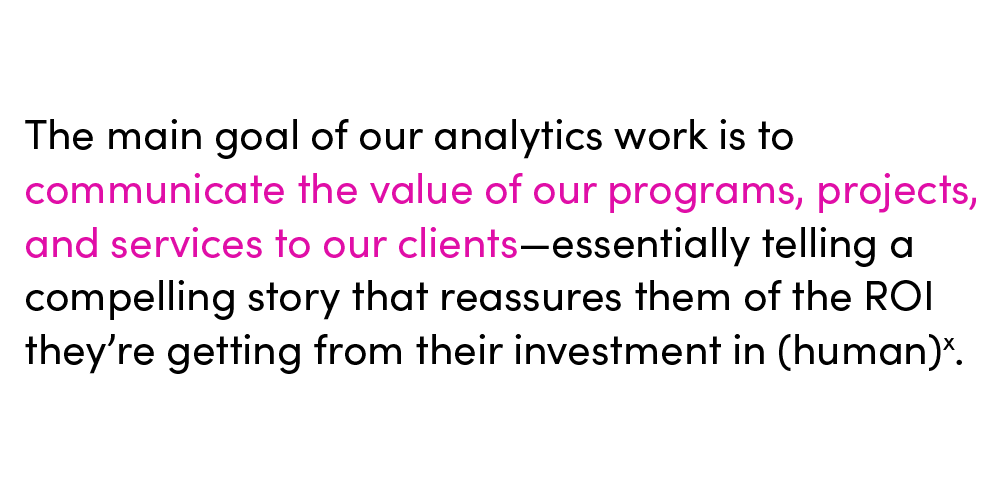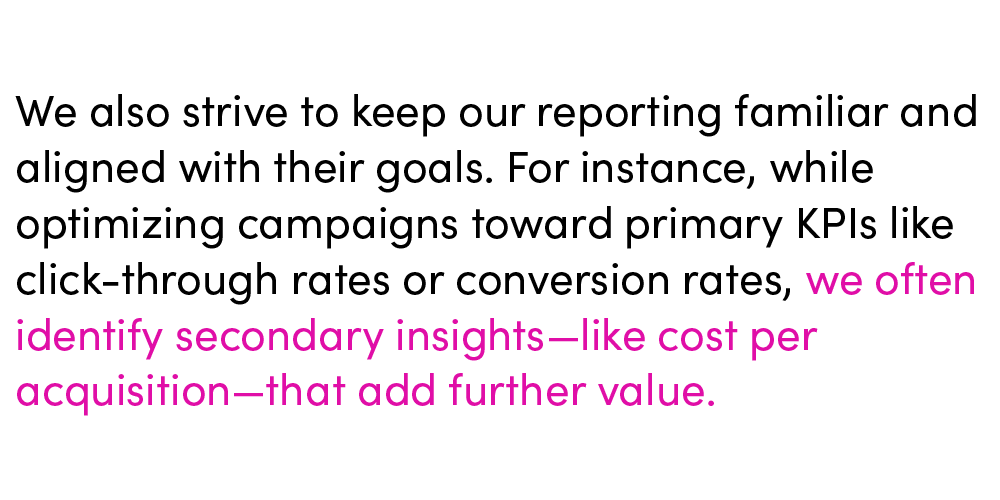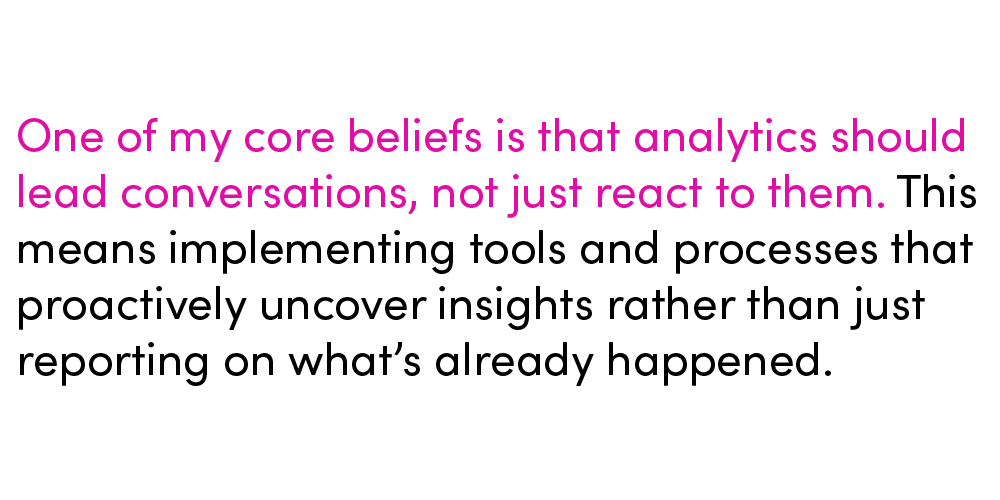Not so long ago, data analytics was considered a niche practice, reserved for specialists poring over spreadsheets and disconnected metrics. Today, data is everywhere—powering decisions, driving strategies, and shaping entire industries. Yet for many CMOs and marketers, the sheer volume and complexity of available data can feel overwhelming. In fact, in a recent survey, 87% of marketers said that data is their company’s most under-utilized asset. That’s why (human)x continues to focus on leveraging first-party data and predictive analytics to give clients the actionable insights they need to create dynamic growth and sustained engagement with their customers.

For leaders like Clayton Sheppard, the newly appointed Director of Data Strategy and Analytics at (human)x, making sense of the numbers—and transforming them into actionable insights—is a daily focus. As data storytelling, advanced analytics, and AI tools continue to evolve, they’re not only streamlining how businesses operate but also redefining what’s possible. Recently, we sat down with Clayton to talk about his approach to analytics, opportunities for innovation, and the trends shaping the future of data strategy.
You’re the new Director of Data Strategy and Analytics. Could you describe your role and what it entails?
My role involves leading the analytics team at (human)x and developing new strategic initiatives to take what is already a very talented and passionate group to an even greater level of capabilities for our clients. As always, we want to ensure there is open and clear communication within the team and between departments as we move forward and implement new structures and processes that will help the department to continue to advance.
Ultimately, we want to better serve both our clients and internal stakeholders. The main goal of our analytics work is to communicate the value of our programs, projects, and services to our clients—essentially telling a compelling story that reassures them of the ROI they’re getting from their investment in (human)x. Of course, this storytelling varies depending on the client and program.
For example, for enterprise clients, we might report on website behavior, video views, social interactions, paid search, and paid social performance. For smaller clients running more tactical campaigns, we adjust our approach—offering simplified dashboards and reports while still demonstrating the value of our services. It’s all about tailoring the level of reporting to match the scope and goals of each client.

Data analytics can often be filled with jargon, acronyms, and complexities. How do you effectively communicate the value of your work to non-technical stakeholders, such as clients?
Our priority is to make our reporting and storytelling both relevant and digestible. We start by clearly defining key performance indicators (KPIs) with the client during the onboarding process. For example, tonight we’re hosting a KPI workshop with a new outdoor entertainment client. Whether the project is enterprise-level or campaign-based, we’ll establish upfront what success looks like for them. This way, when we deliver reports, there’s no confusion about the metrics we’re focusing on.
We also strive to keep our reporting familiar and aligned with their goals. For instance, while optimizing campaigns toward primary KPIs like click-through rates or conversion rates, we often identify secondary insights—like cost per acquisition—that add further value. By tying these insights back to the established KPIs, we maintain consistency and relevance in our storytelling.

Are there common misconceptions or misunderstandings you’ve noticed among clients about what you do?
Definitely. A common challenge is helping clients understand the limits of what can be tracked and reported based on the data we have access to. For example, a client recently asked if we could report on purchases by a particular type of customer. While similar platforms might track such details through user accounts, we don’t have access to that kind of information unless the client provides it explicitly.
This often highlights the blurred line between business intelligence (BI) and digital analytics. Clients may expect their marketing team to answer BI-level questions, like profit margins per product, which requires detailed backend data. While we can often step into that space, it typically involves additional data integration and development work. I see this as an opportunity to educate clients about what’s feasible and to position our team as capable of delivering advanced analytics when needed.
Are there approaches that other analytics teams rely on that your department does differently?
That’s an interesting question. One of my core beliefs is that analytics should lead conversations, not just react to them. This means implementing tools and processes that proactively uncover insights rather than just reporting on what’s already happened.
For example, one of the initiatives I’m working on is a robust analytics audit process. Before implementing advanced analytics capabilities for a client, we conduct a thorough audit of their current setup. This helps us identify gaps and areas for improvement, ensuring we’re set up for success from the start. Additionally, we’re exploring tools like media mix modeling to better evaluate the efficacy of marketing channels and allocate resources more efficiently.

What analytics technologies or trends are you excited about?
BigQuery has been transformative for our dashboards. Previously, we relied on a third-party connector, but switching to BigQuery has significantly improved performance and reduced costs. Dashboards now load almost instantaneously, even during client calls, which is a game-changer.
We’re also using languages like SQL and Python to create custom solutions, allowing us to pull data from multiple channels and streamline reporting. Tools like Google Looker Studio integrate seamlessly with BigQuery, creating a stable and efficient reporting environment.
In terms of broader trends, AI is making a big impact. It’s not replacing jobs but rather enhancing efficiency. For instance, we’ve used ChatGPT to assist with writing complex SQL queries or generating Python scripts, allowing us to scale our efforts and improve capabilities. In the coming years, I anticipate more platforms integrating AI functionalities, making these tools even more indispensable.
What other developments do you predict we’ll see in the next year or two?
AI will continue to evolve, becoming a standard feature in most analytics and marketing tools. However, there’s a misconception that AI will solve everything—it’s just a tool to make work more efficient. The human element, particularly in storytelling and client engagement, remains irreplaceable.
I also foresee a growing emphasis on integrating advanced analytics into everyday workflows. Clients expect faster, more detailed insights, so tools and processes that enable real-time analysis and actionable recommendations will be critical. Agencies that can adapt to this demand while maintaining a human touch in their storytelling will be the ones that stand out.
